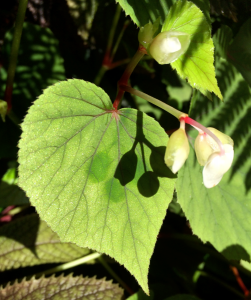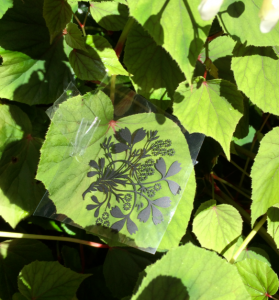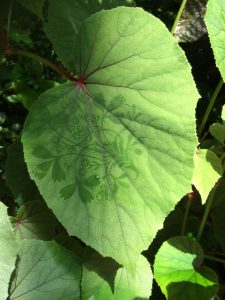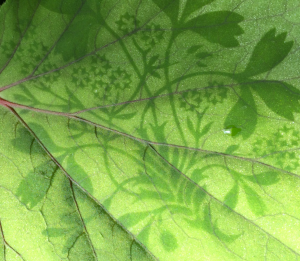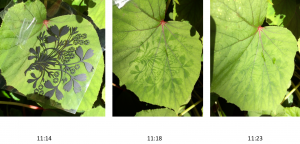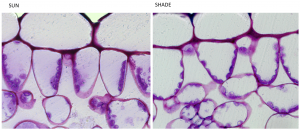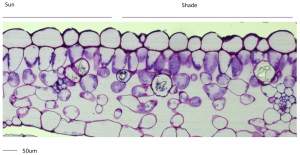The few fine days which we had during August revealed an interesting trick in one of the plants in the temperate greenhouse. David Tricker, one of our greenhouse keepers, noticed that in bright sunlight shadows on Begonia grandis were semi-permanent.
Rachel Brewer printed the RBGE logo onto acetate for me, and after a 2 week wait for annother sunny day I finally taped it to a leaf in bright sunlight.
5 minutes later I had a leaf print.
The print is very precise – it seems that single cells respond individually.
5 minutes is enough time for a print to take and for it to fade.
The effect is due to moving chloroplasts. Bright sunlight can damage the delicate photosynthetic machinery of the shade loving begonia so chloroplasts move out of the path of the sun, stacking up vertically against the sides of the cell. In the shade the chloroplasts need to capture all the light they can so spread out along the horizontal ends of the cells
This effect is very precise. Here’s the boundary between a sun exposed and a shaded region.
This effect was first reported over 100 years ago and has been well researched in model species (Wada and Suetsugu, 2004 Current Opinion in Plant Biology 7; 626–631). Plants detect the change in levels of blue light and this activates a protein which binds the chloroplasts to the actin filaments, which make up the skeleton of the cell, moving them along. We know from our work on the begonia genome that the signalling and the activating parts of the pathway exisit in begonia. We have yet to find out why some species show this effect much more strongly than others.

